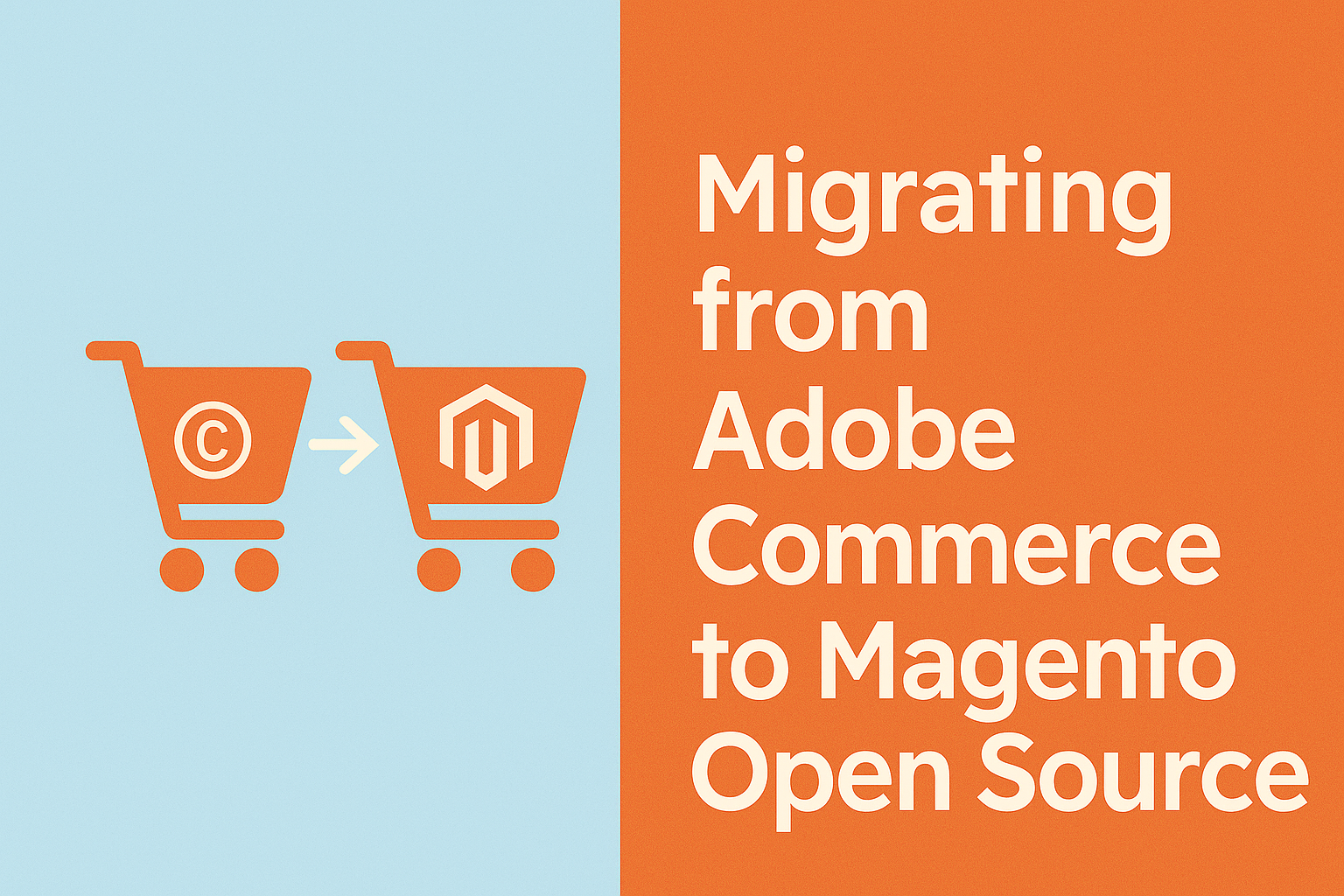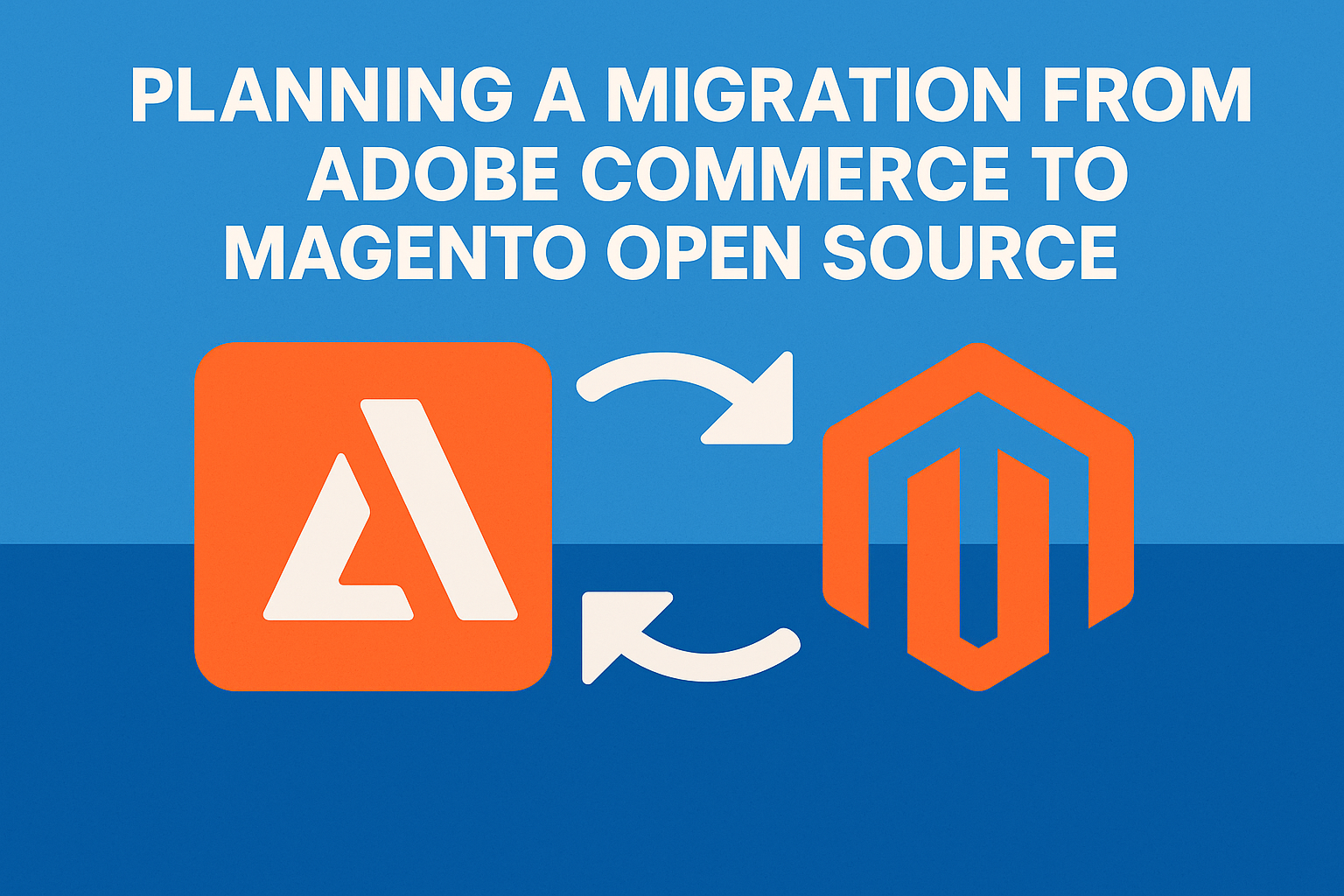Mastering Migration: Navigating the Transition from Magento to Adobe Commerce
Unlock a seamless transition while migrating from Magento to Adobe Commerce. Navigate challenges, embrace enhancements, and elevate your ecommerce store.

Moving from Adobe Commerce (formerly Magento Enterprise Edition) to Magento Open Source is often referred to as a downgrade, but that label doesn’t hold up under scrutiny. When the Open Source edition better matches your technical needs and business operations, it’s a migration toward fit, not a step down.
This decision is gaining relevance as Adobe continues to shift focus to its “Commerce as a Service” initiative. That direction introduces questions about long-term alignment between the current on-premise Adobe Commerce codebase and future offerings. Magento Open Source, by contrast, continues to offer a self-hosted, fully accessible platform with a large ecosystem of support and contributions.
This post introduces the considerations involved in making this migration. Future posts will walk through the process, including codebase cleanup, dependency removal, data preservation, and post-migration validation.
Several common reasons lead teams to consider a move to Magento Open Source:
These decisions often follow a feature audit, where teams find that many Adobe Commerce capabilities are not actively used or no longer align with current workflows.
Magento Open Source and Adobe Commerce share a foundational codebase, but Adobe Commerce includes additional modules and integrations not available in the Open Source edition. These include:
Magento Open Source includes the full core feature set for catalog, checkout, order management, and APIs. Many Adobe Commerce-exclusive features can be replicated, when needed, using third-party extensions or custom development.
For example, while negotiable quotes and Visual Merchandiser are not included, equivalent tools are available through the extension ecosystem.
When Magento Open Source Makes Sense
This migration tends to make the most sense when a business:
It’s also a way to simplify your environment, removing unused or partially adopted Adobe modules that may be adding maintenance overhead without business value.
Clearing Up Misconceptions
One of the most common concerns is that this move represents a loss. In practice, many teams find the opposite. Migrating to Magento Open Source can reduce technical debt, lower cost, and improve agility.
It’s also worth clarifying that:
This is the first in a series of posts designed to help teams plan and carry out a successful migration. Future posts will cover:
If you're considering this migration, start by auditing your current use of Adobe Commerce features. That assessment will shape how much effort is required and how much value you can gain by making the move.

Unlock a seamless transition while migrating from Magento to Adobe Commerce. Navigate challenges, embrace enhancements, and elevate your ecommerce store.

Considering a move from Adobe Commerce to Magento Open Source? Learn how to plan your migration with a feature audit, data review, and roadmap to ensure a smooth transition.

Learn the differences between Magento Open Source and Adobe Commerce to help you decide what solution is best for your eCommerce business.